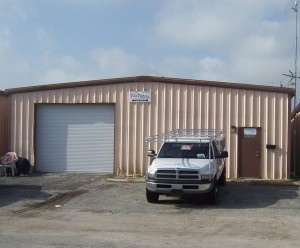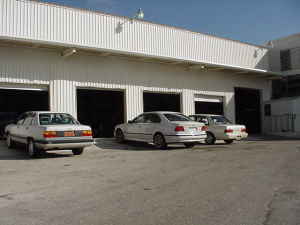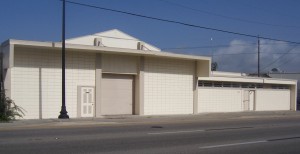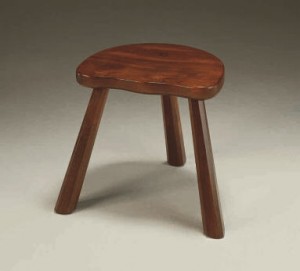Kangaroo Kronicles 27 – Making Big Bucks with Warehouses Part II
Saturday, September 24, 2011 By Stu Silver ·0
Kangaroo Kronicles 27– Making Big Bucks
with Warehouses- Part II
By
“Uncle Zally” / Stu Silver
___________________________________________________
 Last week, I didn’t want you to think I was a one trick pony, so I discussed a different housing investment I am passionate about, ware – housing.
Last week, I didn’t want you to think I was a one trick pony, so I discussed a different housing investment I am passionate about, ware – housing.
I then showed you, in 2011 D.R. – During Recession – the process of how to figure out what you could pay for a warehouse today, that would give you at least a 10% return, and a fantastic return A.R. in a N.E., After Recession in a Normal Economy.
We even coined a new phrase together: “Warehouses are the big boxes that spit out money.”
At the end of the article, I said if enough of you are interested, next week I would show you how to manage warehouses for fun and profit.
Well, enough of you were interested.
Now, as I sit here writing this, I realize it’s time to get out Uncle Zally’s 3 legged stool for business success, and take it for a spin, namely:
1- Excellence in your product or service
2- Excellence in the management of the business and people
3- Excellence in marketing
So this has turned into a four part series, taking each one of the legs in turn. In this blog, we will discuss excellence in the warehouse product – for an investor.
If you remember from last week, I said we get the most calls for 2,000 square foot warehouses priced at $500/month rent, gross. By gross, I mean there are no additional charges for insurance, real estate taxes, and common area maintenance, called CAM. When we return to a Normal Economy, I suspect we can return to having those add-ons to make a true triple net lease, but for now, in the recession, our market says, “Sorry, no add-ons.”
Therefore, the smart thing to do is divide your warehouses into 2,000 square foot units. That will mean fireproof partitions. In most cases, that will also mean splitting up the electric and other utilities so each unit can be billed separately for utilities. It might also mean providing additional bathrooms, but warehouse bathrooms are inexpensive – you just need a toilet and a sink, three 5 foot by 5 foot walls, and a door. Oh, and a toilet paper dispenser and a paper towel rack might be nice, also.
 The picture to the left is one of four 4,000 square foot warehouses we purchased B.R., Before Recession. Three of the warehouses were divided into 2 units of 2,000 square feet each. We took down the partitions because it was just as easy to rent 4,000 square feet then, as 2,000 square feet, and we had fewer tenants to deal with.
The picture to the left is one of four 4,000 square foot warehouses we purchased B.R., Before Recession. Three of the warehouses were divided into 2 units of 2,000 square feet each. We took down the partitions because it was just as easy to rent 4,000 square feet then, as 2,000 square feet, and we had fewer tenants to deal with.
Now, we are thinking of putting up the partitions again. Two warehouses became vacant recently, both surprises, because the tenants went out of business in the middle of the night. The calls are slow now for 4,000 feet units. If we don’t rent them by the time I get back from Israel in mid-October, then we will build back the partitions once again.
Next comes the offices. The vast majority of your tenants will want a small air conditioned office up front for the boss and secretary, and the rest of the space open for storage and work areas. In some cases, they will want two separate offices, so you might anticipate that need up front and make two small connected offices.
 The height of the warehouse and the roll up doors are very important for businesses. A height of 12 feet is okay, but the higher, the better. The same goes for the roll up door, which should be 10 feet or higher. If there is only ground loading of goods, that is okay for small warehouses like these, but when you get into large spaces, you want to make sure you have dock-high loading so a fork lift can drive right from the warehouse into a tractor trailer.
The height of the warehouse and the roll up doors are very important for businesses. A height of 12 feet is okay, but the higher, the better. The same goes for the roll up door, which should be 10 feet or higher. If there is only ground loading of goods, that is okay for small warehouses like these, but when you get into large spaces, you want to make sure you have dock-high loading so a fork lift can drive right from the warehouse into a tractor trailer.
There should be electric outlets every four feet or more inside the work area, and if you can get three phase electric, great. Also, the bigger the electric service, the better.
Outside parking should be a minimum of one space for every 500 square feet, and once again, the more the merrier. The same goes for outside storage, which should be fenced and locked.
What about location? Warehouse tenants are more tolerant of marginal areas than residential tenants are, but once again, location location location rules. Close proximity to Interstate Highways, airports, and population centers where customers are, is important for most warehouse tenants.
 In terms of excellence in maintaining warehouses, luckily, commercial tenants are used to fixing everything that breaks inside, except for the roof (unlike residential tenants who don’t want to lift a finger.) Hence the term triple-net lease. All you need to do is make sure the outside looks good, which means painting about every 5 years, and the roof doesn’t leak.
In terms of excellence in maintaining warehouses, luckily, commercial tenants are used to fixing everything that breaks inside, except for the roof (unlike residential tenants who don’t want to lift a finger.) Hence the term triple-net lease. All you need to do is make sure the outside looks good, which means painting about every 5 years, and the roof doesn’t leak.
That is enough for now about the excellence of your product.
Next week we will discuss excellence in managing your tenants and your business. We will also discuss how you find more warehouses to invest in.
Then, in the final article, will discuss marketing, which means, finding customers – tenants.
Until then, Cheers, Mate!
-
Filed under Articles · Tagged




